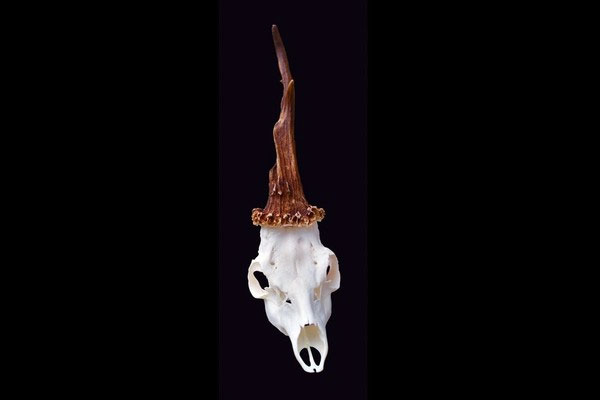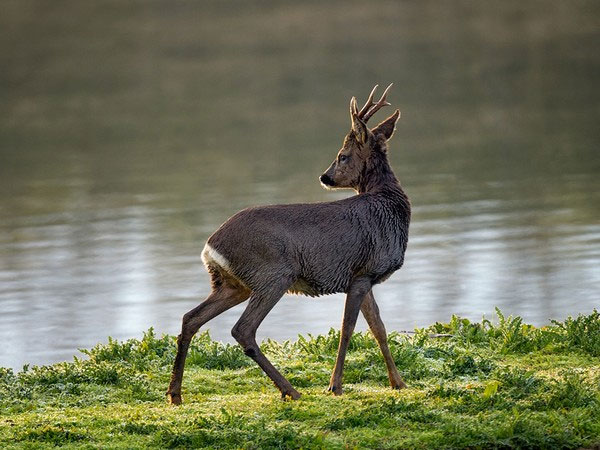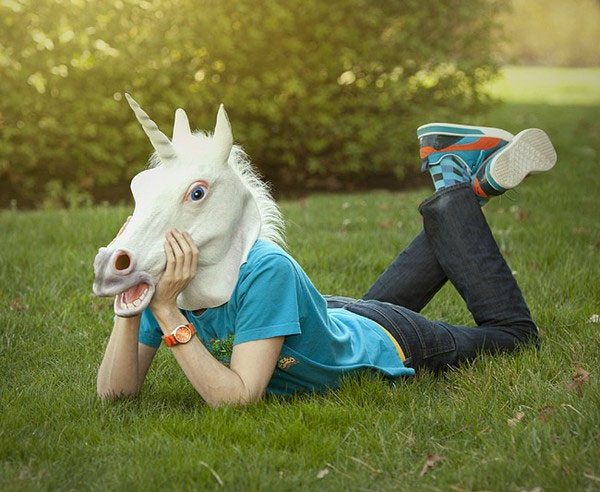The skull of the unicorn is real on Earth
The recent discovery shows the existence of a mutated deer with only one horn, very similar to the unicorn described in the legend.
>>>Discover a deer with a rare horn
Unicorns are single-horned beasts that appear only in children's legends or fairy tales. However, biologists have recently discovered the skull of a male deer with very similar characteristics.

The skull of individual male deer is said to be unicorn in legend
Most likely, this unicorn horn is a product formed after a head injury in which the deer is encountered.
Accordingly, a hunter unknowingly hunted an old male with only one horn while working in Celje, Slovenia. This deer species belongs to the family Capreolus capreolus , which lives mainly in continental Europe. At the same time, this species is small in size, red or gray-brown fur, well adapted to cold environments.

Image of a male deer belonging to the common Capreolus capreolus family
Expert Boštjan Pokorny is the person who accurately identifies the biological origin of this deer skull. He confided that in his life, he had never witnessed such a strange skull.

Unicorns may not be imaginary summoned beasts but are true in history
Pokorny also said: ' In this deer Capreolus capreolus, only adult males with antlers and gauze always have symmetrical structures on both sides of the skull. However, in this case, the two gauze structures fit together to form a single horned animal. '

Is it true that the unicorn in the legend is the individual deer mutated gauze?
Many other experts also sought to explain this interesting finding. They derive from the mechanism of antlers in deer and deer in general.
Accordingly, antlers are bone structures that grow every year of deer skulls. They are completely different from the horns of species such as buffaloes, cows, rhinos . which are formed from keratin and never fall off.
Kip Adams, a wildlife researcher, commented: ' Cells that help antlers grow and develop, which are the most wonderful cells people have ever known.'

In the spring, sunlight stimulates testosterone in the male deer, causing the antlers to start papillae and grow. At the end of the breeding season (usually in winter), deer antlers begin to self-fall to help them conserve body energy.
In the case of this 'unicorn' individual, scientists believe that, perhaps during the process of new papillae, he encountered an accident or injury at the head. As a result, the antiproliferative cells were mutated, causing a strange shape of 1-0-2 on the deer.
Reference: National Geographic
- News aggregation or week 4/11
- The appearance of unicorns caused a stir because it was too different
- Netherlands: Successfully implanted 3D skull for a woman
- It turns out that the unicorn in the legend is real but it is terrible
- T-rex's skull was so hard that it couldn't bite
- Doubts about the mysterious crystal skull case
- Romania: A 33,000-year-old skull cracked revealing a scary story
- The DNA of the mysterious Siberian unicorn species was first analyzed
- Discover the oldest tiger species on Earth
- The surgery for piercing the skull was 3,000 years ago
- Technical details of
- One-horned sheep escapes the slaughterhouse because of the unicorn
 Discovered an ancient centipede fossil 99 million years old
Discovered an ancient centipede fossil 99 million years old Discovered bat-like dinosaurs in China
Discovered bat-like dinosaurs in China Discovered a 200-year-old bronze cannon of the coast
Discovered a 200-year-old bronze cannon of the coast Discover 305 million-year-old spider fossils
Discover 305 million-year-old spider fossils